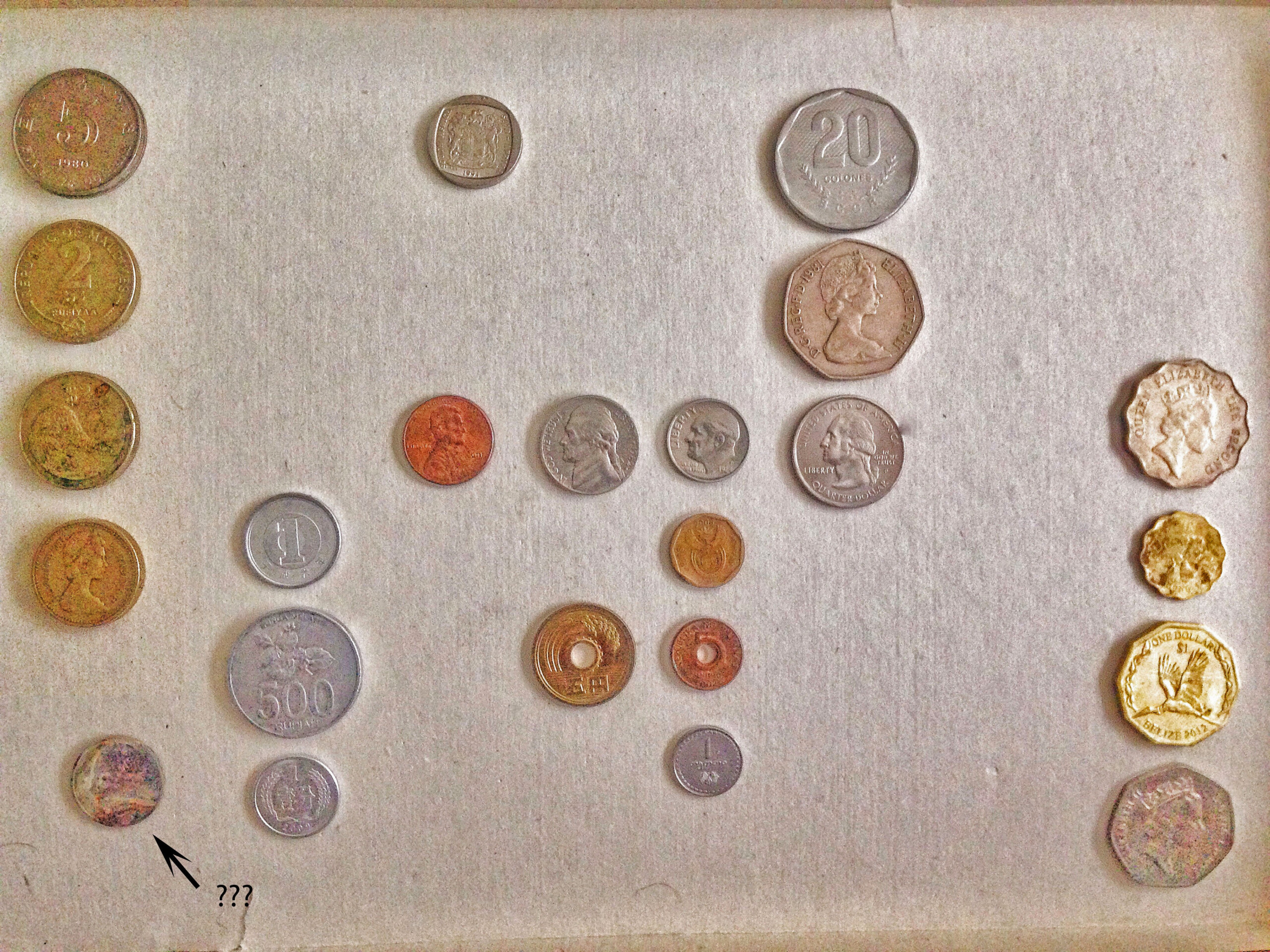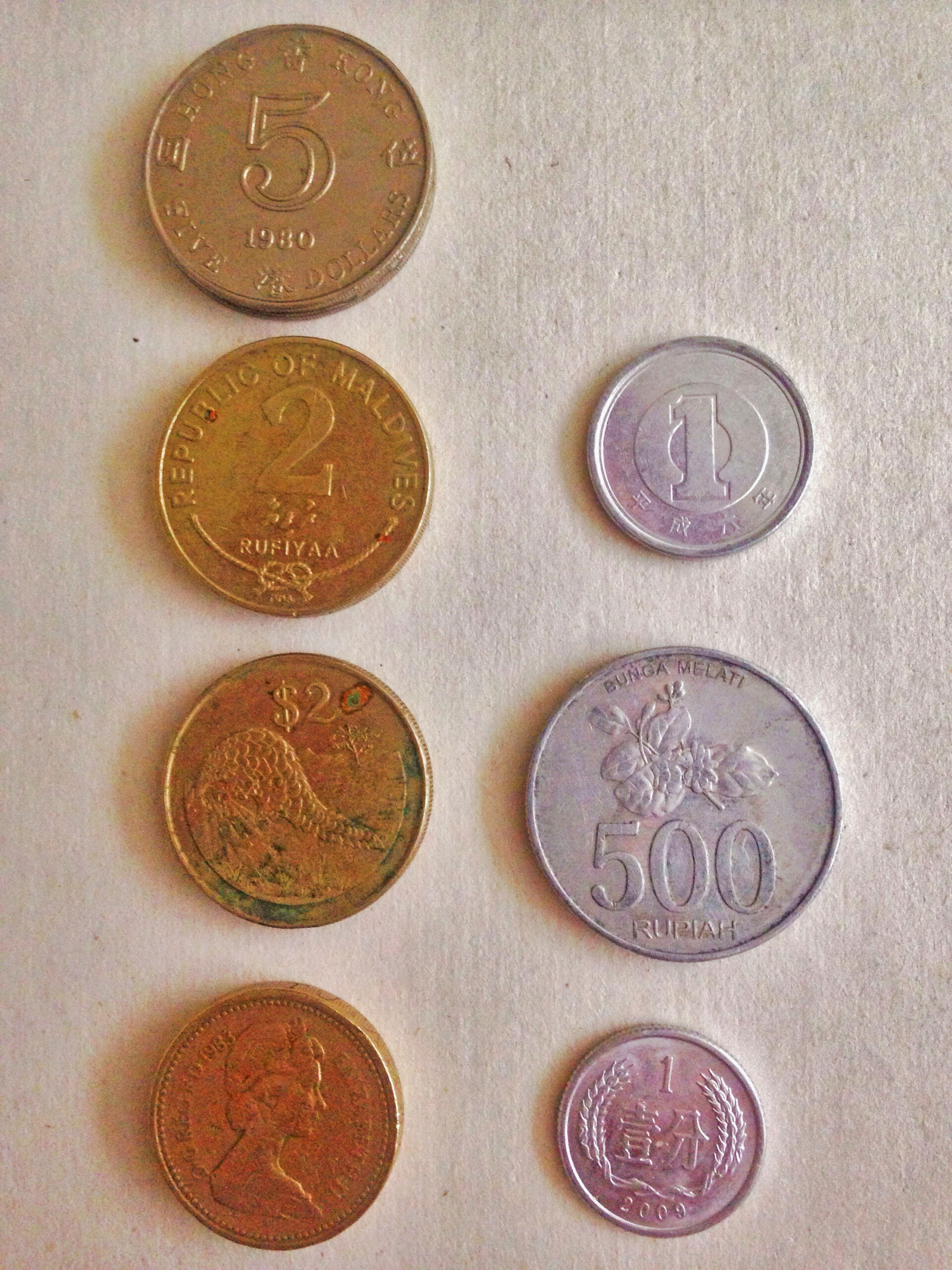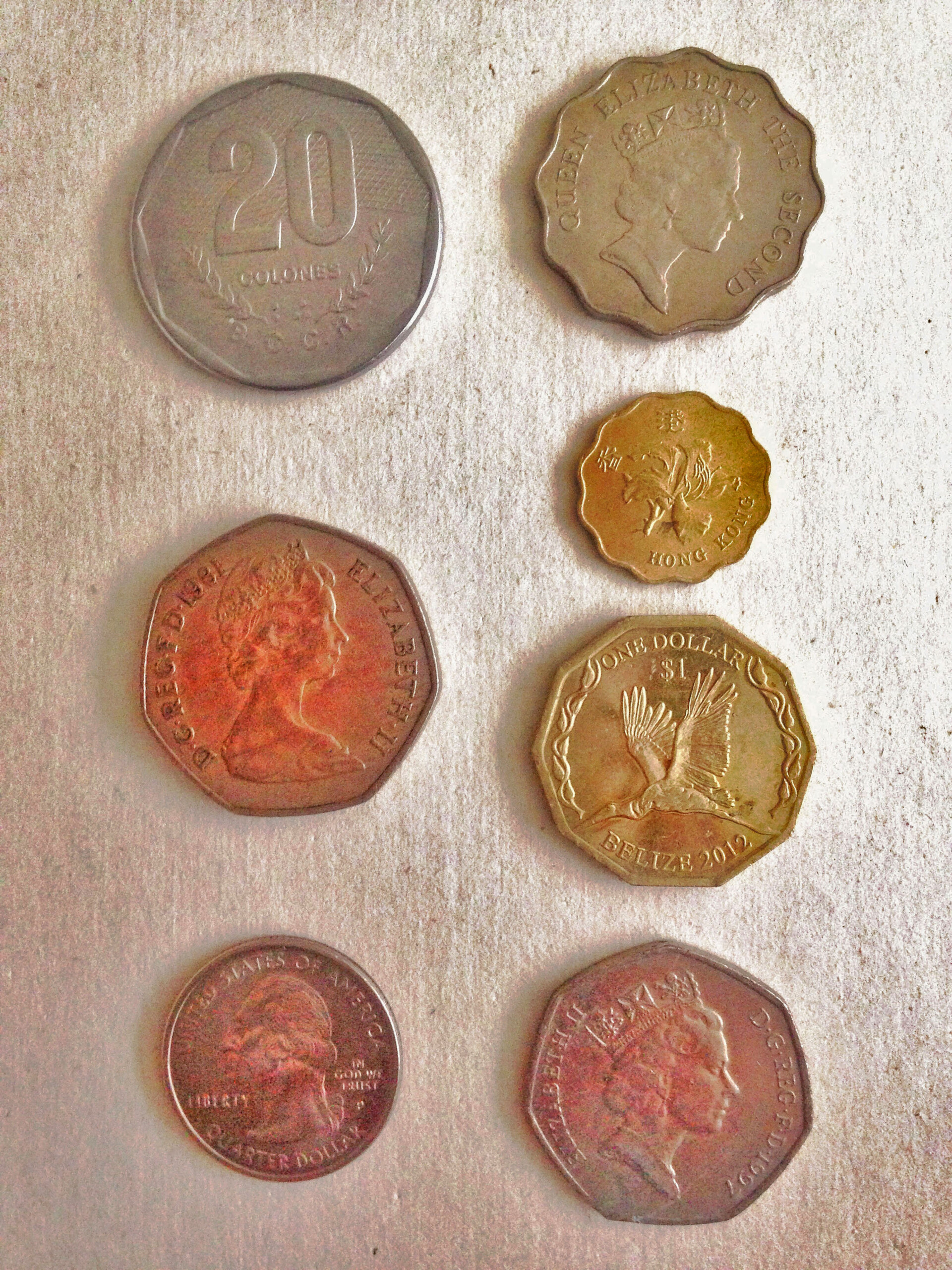
Coins are obnoxious.
Kudos to Canada for stopping the minting of the tangible penny. Denmark’s central bank hasn’t produced paper money or coins, nor did it have a single bank robbery in 2022. Moreover, why can’t we change this metal at a currency exchange place? Too many irritating reasons.
Yet on the flip side, a number of countries around the world accept U.S. coins as legal tender. Ecuador is one example. And then there are some countries that accept coins from their neighbors.
Getting back on track, I guess I used to be something of a numismatist, or coin collector. The majority of my collection consists of coins more useful as paper weights than legal tender – for instance, European pre-euro coinage, and something from 1980s Zimbabwe — but that’s part of the point of it being a hobby, no?
What follows is a sampling of some of the bulkier, flimsier, and generally inconvenient residents of pockets and purses worldwide (and yes, I realize that they’re still money) ….

The left column, with examples (top to bottom) from Hong Kong, the Maldives, Zimbabwe, and the UK, tip the scales something fierce. However, if one of those ever fell from your hand or pocket, you’d definitely notice it.
At the same time, are those any more odious than their extremely light opposites in the right column? We have the Japanese one (y)en coin, the Indonesian 500 rupiah, and the bane of my consumerist existence while in China, the fen. If a cashier gives you a fen, it means the cashier is laughing at you.

With the US quarter as a guide, the left column, with Costa Rica and the UK again, as well as the right column with Hong Kong, Belize, and the same 50p from the UK, display coins that are too darn big. Though we’re nowhere near the scale of the monolithic currency of some Pacific Islands, what’s the reason for this?
The right column also shows some of the funkier shapes of coins. Someone was asleep at the switch one day, and now his/her handy work gets the attention of bloggers.

Starting from the left, we have the Japanese five (y)en coin, the US dime, 50 cents from South Africa, 5 sentimo from the Philippines, one tetri from Georgia, 5 koruna from the Czech Republic, and 20 colones from Costa Rica.
The first time I noticed a perforated coin was in Japan. Curious about why some coins have a hole in them? Necklaces are one reason, sewing coins into clothing, another. Thinking about it another way, the Japanese 5 en coin isn’t worth much – particularly outside of Japan – but string it onto some jewelry, and watch your coffers grow.
As for the middle column, that coinage is ridiculous small; the US penny – for its size and its denomination – and the 20 colones, were placed in the photo for comparison. I’d feel sheepish trying to pay for something with tetri, or the colones for that matter. Can you imagine a coin-only checkout line?
I hope that you enjoyed this brief tour of (these horrible) coins from around the world. Are there any standouts in your book?

US one-dollar bills are obnoxious.
Those, too!
oh no no, we need to have paper money and coins!! Its so much easier to save money than the other options.
I appreciate your comment, Tina. No argument against money here; rather, I just get frustrated in having all of these coins that can’t be exchange once you leave that country. Plus, they’re a bear to carry around, particularly when taking lengthy walks.
If they could be transferred to some add-value that had usage in many countries, that would be nice.